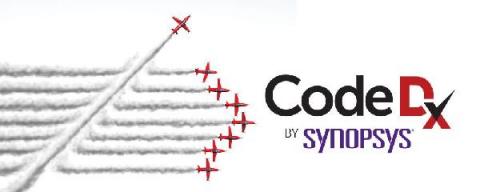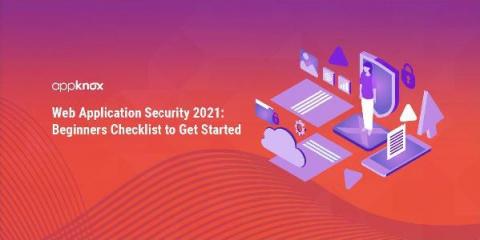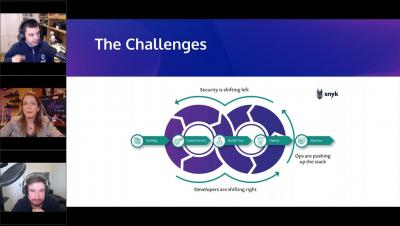Security | Threat Detection | Cyberattacks | DevSecOps | Compliance
June 2021
Speed or Security? Don't Compromise
“Speed is the new currency of business.” Chairman and CEO of Salesforce Marc R. Benioff’s words are especially potent today as many organizations small and large look for ways to speed up production during their shifts to digital. In software development, speed is a critical factor. Everything from shifting priorities to manual processes and siloed teams can seriously impede deployment schedules.
Too Many Vulnerabilities and Too Little Time: How Do I Ship the Product?
The percentage of open source code in the enterprise has been estimated to be in the 40 percent to 70 percent range. This doesn't make the headlines anymore, but even if your company falls in the average of this range, there is no dearth of work to do to clean up, comply with AppSec policies, and ship the product. Phew! So where do you start when it comes to resolving all the vulnerabilities uncovered in your open source libraries?
Announcing State of Software Security v11: Open Source Edition
Today, we published the open source edition of our annual State of Software Security report. Solely focused on the security of open source libraries, the report includes analysis of 13 million scans of more than 86,000 repositories, containing more than 301,000 unique libraries. In last year’s open source edition report, we looked at a snapshot of open source library use and security.
How to Interpret the Various Sections of the Cybersecurity Executive Order
The Biden administration released a new executive order for cybersecurity on May 12, 2021. Although many know the overarching message of the executive order, it’s also important to know the specific details outlined in each section.
Get to the Bottom of False Positives (1/4): What is a false positive and what are the common causes?
Get to the Bottom of False Positives: Legitimate false positives and what you need to do.
Get to the Bottom of False Positives: Potential false positives and what to do with them.
Get to the Bottom of False Positives: Potential false positives arising and how to avoid them.
Coverity - Static Analysis by Synopsys
Appsec has a need for speed and continuous security
This is part 2 in a mini-series about the current paradigm shift in security towards a continuous security approach. Richard Carlsson, Detectify CEO, was on Enterprise Security Weekly to shed light on it and this article delves into the need for velocity to activate this strategy.
CRLF Injection - Veracode AppSec Tutorial
Directory Traversal - Veracode AppSec Tutorials
Cross-site Scripting - Veracode AppSec Tutorials
Information Leakage - Veracode AppSec Tutorials
Open Redirects - Veracode AppSec Tutorials
SQL Injection - Veracode AppSec Tutorials
Code Dx brings game-changing capabilities to Synopsys
Code Dx adds software vulnerability correlation, prioritization, and consolidated risk reporting. Today, Synopsys announced the acquisition of Code Dx, the provider of an award-winning application security risk management solution that automates and accelerates the discovery, prioritization, and remediation of software vulnerabilities.
Command Injection - Veracode AppSec Tutorials
Web Application Security 2021: Beginners Checklist to Get Started
Who can deny the importance of security for their website or online store? You may have already implemented some security measures, and you can feel quite complacent about it, but they are far from enough when we consider the security challenges. In recent years, even many leading websites and web apps faced a huge surge of security attacks on their websites.
How to Measure Your Application Security Program in a Cloud Native World
Web application security testing at scale with Coverity SAST
With the rise of cyber attacks on web apps, organizations require AST tools that can help manage web application security and compliance. Remember the saga of Equifax and the unpatched Apache Struts vulnerability? It wasn’t that long ago, and it’s one of the most notorious web application security incidents to date.
Addressing 5G security with threat modeling
5G introduces security concerns but threat modeling can help you make better informed decisions about your application security risks. 5G is fundamentally different from 4G, LTE, or any other network the telecommunications industry has ever seen before. It promises data rates 100 times faster than 4G, network latency of under 1 millisecond, support for 1 million devices/sq. km., and 99.999% availability of the network.
Veracode Named A Leader In 2021 Gartner Magic Quadrant For Application Security Testing For Eighth Consecutive Time
Snyk named Visionary in 2021 Gartner Magic Quadrant for AST
We have more than a few reasons to be thrilled with the results of the 2021 Gartner Magic Quadrant for Application Security Testing. In our debut on the report, Snyk has been recognized as a Visionary. Additionally, we are placed furthest in the Visionaries quadrant for both Completeness of Vision and Ability to Execute, and second-furthest for Completeness of Vision in the overall Magic Quadrant.
Veracode Named a Leader in 2021 Gartner Magic Quadrant for Application Security Testing
Veracode has been named a Leader in the 2021 Gartner Magic Quadrant for Application Security Testing (AST) for the eighth consecutive year. Gartner evaluates vendors based on their completeness of vision and ability to execute in the application security testing (AST) market. This recognition comes just months after we were named Gartner Peer Insights Customers’ Choice for AST, proving, in our opinion, the strength of our AST offerings according to both experts and users.





















